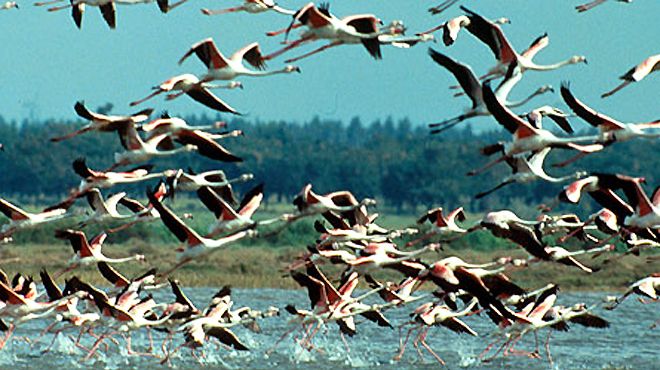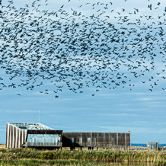Reserva Natural do Estuário do Tejo

Protected Areas
From its source in Spain, in the Serra de Albarracin, to its estuary mouth close to Lisbon, the River Tagus travels a distance of 1.100 kms, making it the longest river flowing across Portugal.
The vast estuary in front of Lisbon's eastern zone has earned the name of the “Mar da Palha” (the Straw Sea). The area classified as a Nature Reserve, lies to the north of Alcochete, and is the largest humid zone in Portugal and one of the ten largest zones of its kind in Europe. The Nature Reserve was created in order to protect the migratory aquatic birds that live here. During the migration season, the estuary receives over 120,000 birds, in particular the black cowbirds that concentrate in this zone, constituting over 20% of the species' population in Western Europe.
But it's the flock of pink flamingos that offers a truly spectacular sight. It always seems impossible that it is precisely these birds which concentrate in the salt pans of Alcochete, close to Lisbon, in an image that conjures up more distant locations, much further south.
The Tagus Nature Reserve extends to Vila Franca de Xira, in a zone of marshland where bulls and horses are reared for Portuguese bullfights. Other traditional activities, now in decline, have left vestiges of their presence such as the salt pans in Samouco and the seafront watermills in Seixal, that have now been transformed into eco-museums.
It is possible to visit the reserve on foot, by bicycle or car, following the proposed itineraries. If you want a different perspective, take a boat trip on one of the typical vessels that formerly crossed the river, transporting people and goods, such as the frigates and long, narrow boats.





 Explore
Explore 
 Remember and Share
Remember and Share 


